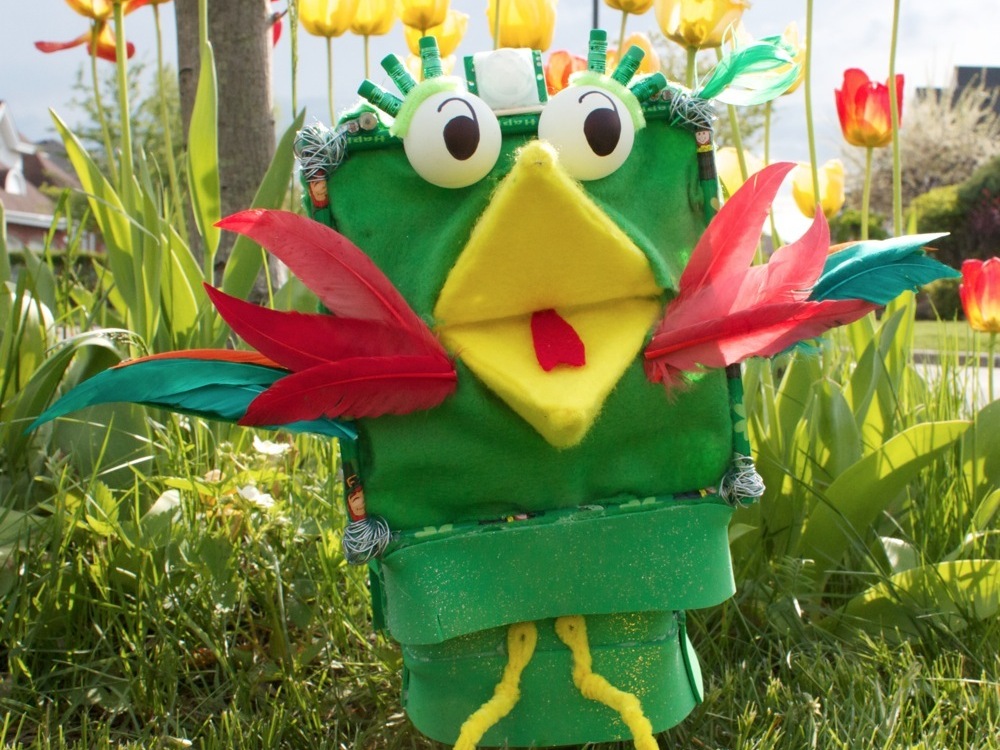A RoboBrrd is a robot that experiments with human-robot interaction and is created from a limited selection of materials. Inspired by birds, RoboBrrd has a beak and wings that allow it to produce actions based on sensory inputs. The combination of multiple actions create behaviours for RoboBrrd to exhibit. These behaviours provide a way for fun and quirky interactions to occur between the robot and human. It is within the interaction where the robot shows its character.
There are numerous aspects, an example being character, that draw humans toward a robot. In the robotics research world, the study of these aspects in robots is under the umbrella of social robotics. Social robotics explores concepts of how robots and humans can interact and understand each other on a more natural basis.
We attempt to introduce three of these concepts with RoboBrrd:
- First, the appearance and initial understanding of expectations for the robot. RoboBrrd’s bio-inspired design allows us to anthropomorphize a familiar species. Humans will be able to recognize the key features, and create base expectations of what the robot may do.
- Second, the robot communicating certain meaningful messages with behaviours to humans through its own movement/output. RoboBrrd allows us to use the degrees of freedom from the beak, wings, and stand to express different behaviours. The LED eyes serve as an indication for the current state of the robot, and can be adapted to illustrate its current mood based on its needs.
- Third, the robot understanding messages from the human. RoboBrrd will have a motion sensor, some tilt sensors, as well as two light dependent resistors (LDRs). These will allow it to interpret what is happening in its surrounding environment, and do some action based on the interpretations.
Building a robot also uses technical and mechanical aspects. Here are some details that we will learn about:
- Designing a robot from a limited variety of materials
- Creating a mechanism to move a beak (converting rotation into somewhat of a linear translation)
- LM317 voltage regulator circuit
- TLC5940 PWM shift out circuit
- Programming servos
- Programming sensors
- Programming behaviours
Building a RoboBrrd can be challenging. The first step will help you determine how complex your RoboBrrd will be, and parts you will need.
Here are some video resources that may also help you:
- RoboBrrd Teaser
- RoboBrrd Character
- RoboBrrd Design
- RoboBrrd Electronics
- RoboBrrd Beak
- RoboBrrd Light Chasing
- Robot Mesh Network – RoboBrrd and MANOI
- Robot Mesh Network – RoboBrrd and MANOI AGAIN!
Here are photo resources:
Here are code resources:



